Introduction: How the Voice You Choose Speaks Volumes
The voice is one of the advertising industry’s most influential vehicles, able to connect with audiences on a level that is distinctly and persuasively human.
In this article
- Introduction: How the Voice You Choose Speaks Volumes
- More specifically, the data contained herein illuminates trends in:
- The Research
- The Rise and Fall of Types of Communications and Advertising Vehicles
- Network and Streaming TV Ads: Taking a Back Seat
- Internet Ads: Continued Growth
- eLearning: Going Up
- Podcasts and Audiobooks: Mixed Messages
- Broadcast and Streaming Radio: Losing Steam
- Green Fields or Deserted Land? Areas to Watch in 2017
- The Fragmentation of Videos
- The Ambiguous Value of Apps
- The Rise of Virtual Reality (VR)
- Demographic Descriptions and Targeting Tactics
- Who Creative Professionals are Speaking To
- Gen X and Millennials are the Top Focus
- International Marketplaces are a Reality for Most
- How the Creative Industry is Speaking to Them
- Sounding Like a Peer
- Casting the Right Personas
- Top Personas for 2016
- The Conversational Persona is Dominating
- The Most Desirable Vocal Qualities
- 2016 Was the Year of the Approachable Expert
- Other Tactics for Voice Over Casting to Continue in 2017
- Celebrity Soundalikes
- Accents
- Creative Industry: What’s Hot, What’s Not, and What’s Lukewarm
- Hot
- Lukewarm
- Not
- In Conclusion
But how we choose it and how we use it speaks to something much larger: the voice that is selected can be a direct reflection of the psyche of the consumer, the medium it is embedded in is a reflection of a generation.
This Trends Report examines how advertisers, educators, and companies large and small are attempting to connect with their target audiences, across North America and beyond.
More specifically, the data contained herein illuminates trends in:
- The rise and fall of types of communications and advertising vehicles, including radio, television, and online ads.
- The demographic qualities of audiences that advertisers are targeting with their promotional messages, including age, gender, geography, and language.
- The moods and inflections that are most sought after for resonance and persuasive power (e.g. conversational tone versus authoritative).
- As a valuable tool in the creative professional’s belt, voice over is reflective of the content, medium, and message that media professionals and advertisers are leveraging.
- This analysis of how the voice over industry is shifting, offers a unique window into how the creative industry is reacting to consumer behavior, and is a leading indicator of greater shifts in the media and advertising industry as a whole.
The Research
This report is a reflection of a survey that was reviewed by creative professionals all over North America, and was conducted via email and one-on-one telephone interviews.
Additional insights were provided by a focus group of voice over casting specialists who service a wide variety of industries, territories, and client types.
The creative professionals who responded are avid content creators, holding roles as producers, directors, advertising executives, CEOs, business owners, freelancers, and more.
- 43% of respondents identified as working for companies who create their own content (e.g. in-house marketing and communications teams).
- 57% of respondents identified as working for companies who create content for other companies (e.g. creative agencies, multi-media producers, etc.).
- The markets that these respondents disseminate media to include a mix of local, state/province, national and international markets.
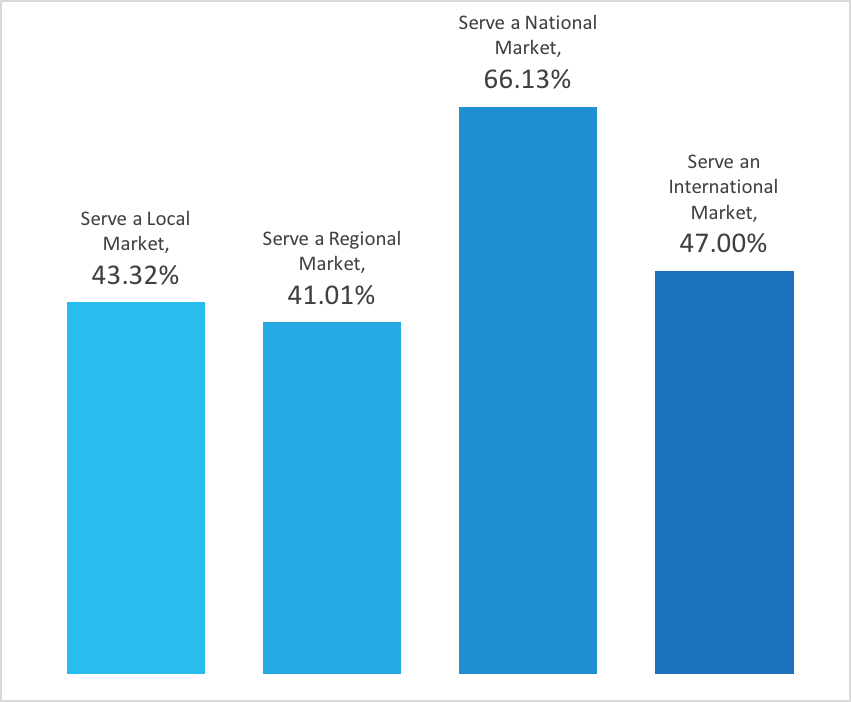
The types of projects or campaigns they work on are as follows:
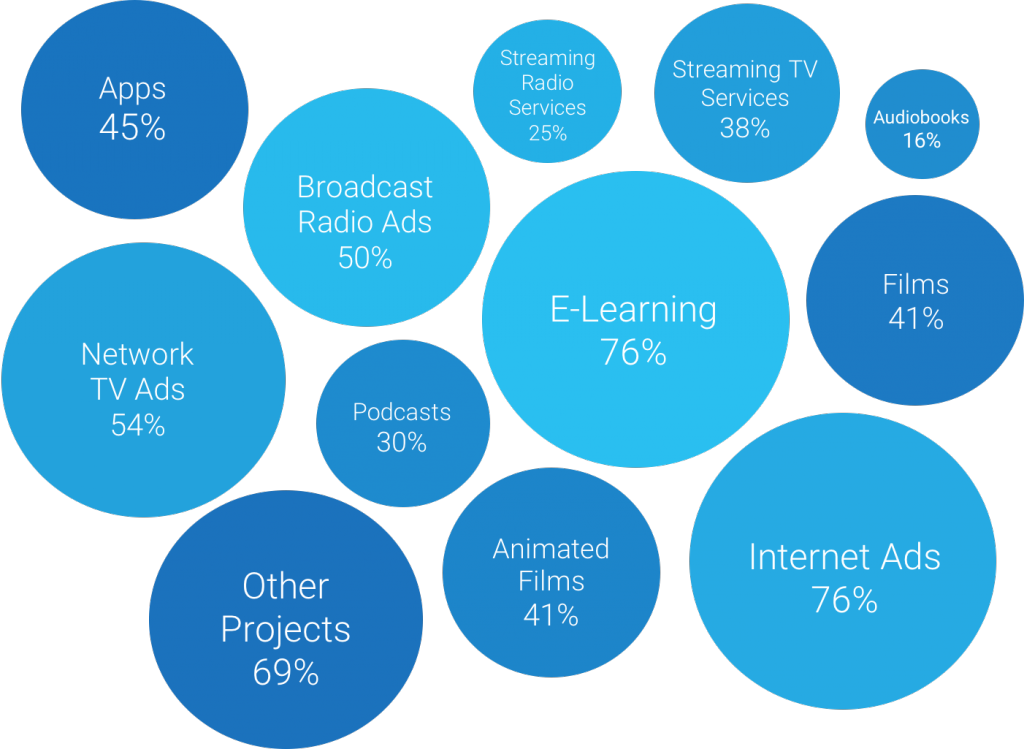
The Rise and Fall of Types of Communications and Advertising Vehicles
Throughout 2016, the mediums and vehicles advertisers and content creators used to communicate their messages fluctuated in popularity in response to audience preferences and the perceived return on investment.
Network and Streaming TV Ads: Taking a Back Seat
TV ads, whether network or streaming, are taking a backseat to online ads with over half of respondents altogether not engaging in the medium.
Network TV ads are grabbing interest more than advertising opportunities on streaming TV services. About 11% of respondents are doing more on networks, vs. only 6% on streaming services.
It would appear that the value of being on streaming TV services is not there – or realized yet – for most. An almost equal number of people are scaling back (13%) as there are diving in (11%) making it seem as though, while this medium is of interest, participants are approaching with caution.
Internet Ads: Continued Growth
Three quarters of all respondents engage in production of online ads, with 36% ramping up in this area. This is an important area of growth.
eLearning: Going Up
eLearning is another area of growth, with perhaps surprisingly, growth of the same signi cance as internet advertising. Though each communication medium serves different stakeholder groups and is very unique, three-quarters of all respondents create eLearning content and 36% are doing more than in the past.
Podcasts and Audiobooks: Mixed Messages
Podcasts and audiobooks continue to be mediums that stir interest, but seem to lose participants just as fast as they gain them.
For audiobooks, 12% of producers are doing less work of this type, with only 5% reporting that they’re doing more of it.
In podcast land, 10% are recording more – while about 14% are actually doing less work in this arena.
Whether these numbers speaks to the time consuming nature of the mediums, the cost – or how audiences are consuming it – remains to be seen.
Broadcast and Streaming Radio: Losing Steam
When it comes to broadcast radio, the losses are greater than the gains. 17% are doing less in this space, while only 13% will be increasing participation in 2017.
Streaming radio? Well, it’s losing steam as well. Only 10% of executives are creating content for this platform, while 13% have said they intend to shift away from the medium.
In short, the airwaves are losing advertisers across the board, even though streaming services are gaining momentum in driving revenue for music producers (Source: 2016 Mid-Year RIAA Report).
This trend appears to indicate that while consumers may be enjoying streaming radio more than ever, advertisers may be getting squeezed out – or seeing less benefit from playing in this space.
Green Fields or Deserted Land? Areas to Watch in 2017
The Fragmentation of Videos
In 2016, something shifted in the world of video production. Just over a quarter of respondents have entered a balancing act – half decreasing, half increasing the amount of production they’re engaging in.
What’s going on?
With the push for content marketing continuing, some are trying to slice and dice what they’ve already created as opposed to creating more, while others are attempting to create a higher volume of shorter, socially friendly pieces.
According to John Stephens of Iris and Light, “Videos are getting shorter and more social media-driven. There’s a huge need for quick, bite-sized online content. Smaller, less expensive productions or the repurposing of existing content.”
Video production houses are feeling the squeeze as clients change their expectations of what a ‘project’ encompasses.
“The number one thing that keeps me up at night is the ongoing shift of project complexity and how best to deliver. What used to be one video per project is now anywhere from 5 to 20 videos, also classified as ‘one project.’ As marketers get more ambitious with their content in a bid to keep up or stay ahead of the game, there are now more deliverables across the board for producers.”
– Jeremy Richter, Richter Studios
The Ambiguous Value of Apps
While apps may have appeared to be the promised land several years ago, in 2016, almost half (48%) of respondents said that apps weren’t worth producing or relevant to their work.
And with data companies like Nielsen reporting that the number of apps on an individual’s phone hasn’t budged in the past 4 years, it’s not surprising that app development isn’t an area of high interest for those looking for a quick way to gain consumer attention.
However, for the 17% of respondents that said they’ll be engaging in app creation more than ever, this figure is hinting at the technology’s applicability in e-learning, and a predicted narrowed focus for app production in the future.
The Rise of Virtual Reality (VR)
“It’s interesting to see where 360 and virtual reality (VR) will take us into 2017, and whether or not it will continue to gain momentum. 360 and VR, like animation, have the ability to be versioned globally and tailored regionally. Voice over talent will play a big part in that.”
– PJ Lee, Partner at Asterisk Media Group Ltd.
Juggernaut consulting house Deloitte predicted that 2016 would be the first year of billion dollar revenue for virtual reality, with growth expected to focus on both full feature and mobile devices offering this new, immersive media experience.
VR has also entered the sphere of interest for survey respondents. Several have noted that they’ll be watching to see how the new technology continues to trend in 2017. However, the sentiment appears to be cautious, warning consumers may either continue to avidly adopt VR – or abandon it as a novelty fad.
“In 2016, we saw an increase in requests for live streaming services, as well as for virtual reality (VR) and 360 content capture. Only time will tell if VR has the same lifespan as 3D production did, or if it even has legs.”
– Todd Wiseman, President of Man with a Cam
Demographic Descriptions and Targeting Tactics
Who Creative Professionals are Speaking To
Although respondents may produce media and advertising that caters to a wide variety of age groups, they were asked to specify an area of focus.
Knowing that over half of respondents (57%) are producing content for other companies, this insight provides a window into ‘who’ a diversity of organizations are attempting to communicate with or target with their promotional messages.
Gen X and Millennials are the Top Focus
Overwhelmingly, Gen X (35- 64 yrs old) and Millennials (18 – 34 yrs old) fall within the bullseye that media is targeting. Interestingly, Gen X (54%) is slightly ahead of Millennials (40%).
Meanwhile, Gen Z is still emerging at 3%, while Baby Boomers and the Great Generation are balancing out the scales at the other end of the spectrum, with 2% and 1% respectively.

International Marketplaces are a Reality for Most
While the bulk of this report is focused on the behaviors of North Americans, this data is a ‘worldwide’ list.
The importance of reflecting worldwide trends is growing, as nearly half of respondents (47%) indicated that their work reaches international markets. Simultaneously, these same creative professionals are leveraging a growing number of international, multilingual voice actors who are participating in the digital voice over marketplace.
This trend appears to be impacting how content producers are crafting scripts and planning the dissemination of their marketing messages in the pre-production phase. 71% produce content in non-English, with approximately 21% of respondents indicating that in 2016, they have increased the number of bilingual scripts they are producing (English + at least one other language).
How the Creative Industry is Speaking to Them
Sounding Like a Peer
When respondents were asked how they cast voices that will connect with their target audience, the vast majority opted for a voice actor who could sound like a peer (73% want a ‘same age’ voice). This statistic supports other evidence that 2016 was the year of the approachable expert.
The other 28% of respondents were split between an older or younger voice (14% each respectively).
Casting the Right Personas
In 2016, the creative industry definitely had a clear picture of the persona who would come across clearly to their primarily Gen X and Millennial audiences.
The role types and vocal qualities that Voices clients selected when posting their casting call online was the primary source of data for this section, and the insights gleaned from the surveys has been used to complement that data.
While the information summarizes the trends that emerged throughout 2016, it’s worthwhile to note that the expectation is that this approach will continue well into 2017, so long as those leveraging these personas found their efforts to be effective.
Top Personas for 2016
The Conversational Persona is Dominating
Personas that are approachable and conversational in nature have risen significantly in popularity. For instance, the ‘executive’ persona, which is professional and friendly, has risen in popularity by 102%, and the Girl Next Door had become 48% more popular in 2016 compared to 2015.
In the chart above, the conversational ‘type’ of persona includes those such as ‘everyman, mother, narrator and storyteller.’ Meanwhile, the announcer persona, although still being sought out, is dwarfed in comparison.
The Most Desirable Vocal Qualities
2016 Was the Year of the Approachable Expert
When the most desirable vocal quality is layered over the most popular role types, it reveals that the creative industry sought a persona that held authority, while remaining approachable, friendly, warm, and informative.
In essence, this persona embodied the qualities that most characterize as ‘conversational,’ and directly reflects on survey respondents preference for a voice that speaks to the listener as a peer – albeit, a peer with the clout of an expert.
Other Tactics for Voice Over Casting to Continue in 2017
Celebrity Soundalikes
Going into 2017, celebrity soundalikes will not be as prevalent as they were in 2015 and 2016. While brands were eager to have the sounds of Morgan Freeman and Tim Allen, emerging trends are indicating that producers and consumers alike are looking for something a little more “everyday.”
The new type of voice that everyone will be hearing in 2017 is one that isn’t perfect; it’s slightly flawed and more real, like that of your best friend. It’s the guy or girl next door. It’s genuine, and sounds nothing like a celebrity endorsement. Consumers are becoming increasingly savvy, and knowing that they’re being sold to has the opposite result of what advertisers want. Consumer behavior is impacting the design of the ads and marketing campaigns we’ll be exposed to in the coming year.
Moving out of 2016, 17% of professional creatives report that they are using – or being asked to use – celebrity soundalikes less. Over 27% flat out refuse to use that strategy at all, and 5% are holding onto the trend, sharing that they’re using a celebrity sound more. About 63% say that there is no change at all for them.
Accents
A specific variety of accents are in demand for 2017. As the marketplace becomes increasingly global, advertisers and executives alike are becoming more culturally sensitive, and thus designing campaigns to reflect that. Adding a human voice that represents those of a brand’s target customer base is savvy, and is a trend we’ll be seeing more of.
The most sought after accents across the world for 2016 and moving into 2017 follow, in order of popularity.
The interesting thing about accent use, though, is the varying levels of distinctiveness that are being requested. 18% say that there is a less of a need for a specific, placeable accent – preferring one that is either multifaceted or very subtle – while 27% report that they need an accent that more obviously points to a specific region. For example, a Spanish accent on an English script is not always sufficient: the need exists to regionalize that further to Spanish-Castilian or Spanish- Galician in some cases.
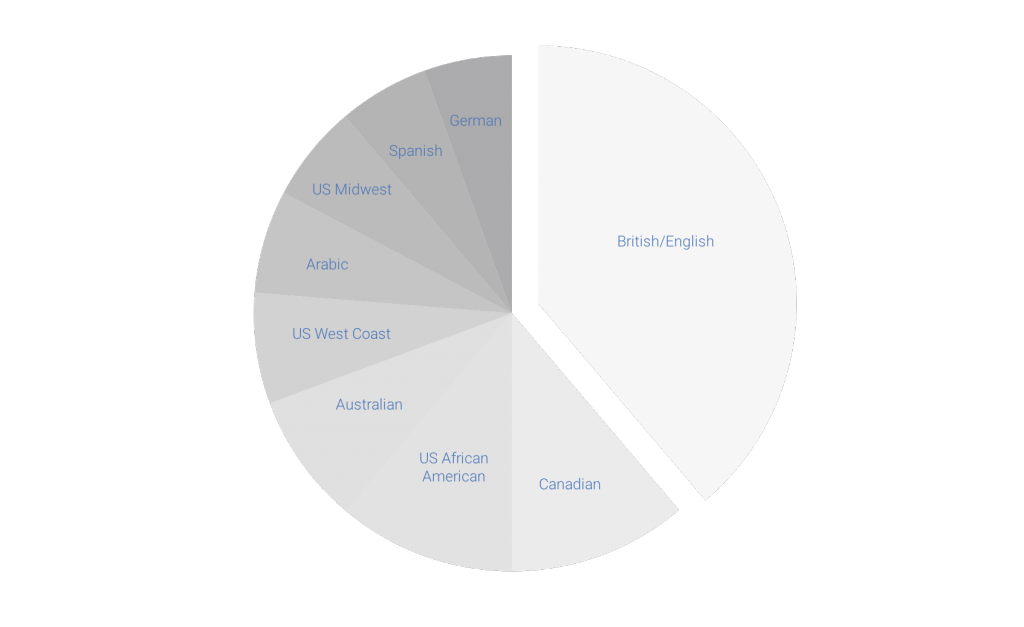
At the same time, 14% share that they are increasingly needing a more neutral sound, perhaps so as not to alienate anyone in a larger customer base. 40% report no change at all (that is, they’re still needing neutral English). The rest simply don’t worry about this.
There is overwhelming support for representing cultural diversity, with 67% believing that it is somewhat to very important, and very few people downgrading its importance – less than 10% believed diversity was not important. As for the rest? Almost a quarter, 24%, took a neutral stance.
Creative Industry: What’s Hot, What’s Not, and What’s Lukewarm
Hot
- Cultural diversity
- Measuring marketing campaigns
- Creating content
- Optimizing the digital user experience
Lukewarm
- Localizing Marketing campaigns
- Having to do more with less time and money
- Going viral (25% say it’s not important while approx 25% say it is)
Not
- Print media
- Having an app
- Giving out price breaks or discounts
In Conclusion
In 2017, as technology and media continue to allow companies to play within a global marketplace, the creative industry is stretching to speak to that international audience. Specifically, those with the largest buying power – Millennials and Gen X.
It’s widely accepted that social media has dramatically changed the way that individuals communicate online, and in response to this, media and advertisers are moving away from the announcer persona, who ‘speaks to the masses’ to the conversational and authoritative ‘peer’ who speaks to the consumer, one-on-one.
Increasingly, this peer must clearly represent diversity – so their voice, and the brand they’re voicing by extension, can be perceived as relevant, no matter where in the world the message is sent.
“When it comes to voice talent, we’re getting a strong need for ‘international’ voices that don’t sound like a specific geographic region. People are looking for broad diversity.”
– John Stephens, Iris and Light
The creative industry is also perpetually taking strides to reach consumers where they are – online. Digital advertising is one of the largest areas of increased production – and is neck-and-neck in rising popularity with e-learning, which appeals to generations who value continuous learning, the acquisition of knowledge and personal and professional advancement.
While media producers struggle with having to do more with less, fragmenting content into more manageable online ‘tidbits,’ some are feeling that the pressure is resulting in a loss of creativity as they try to keep up with the expected volume – others feel that flexing their innovation is the only way to cut through the clutter.
“We’re seeing an increase in requests for more concise, bite-size content. Our experiential clients are looking for short re-cap videos, that tell a story in 15 or 30 seconds rather than in the traditional 3 minutes. In short, we’re not changing our approach as much as we are editing deliverables for our clients.”
– Todd Wiseman, Man with a Cam
With so many diverging trends and emerging technologies, 2017 is sure to be a year to watch, as the creative industry attempts to find its foothold on an ever changing media landscape.
“I’m always looking ahead for emerging trends to bring to my clients in visual media, whether it’s technology or style-based. The media landscape is constantly changing, which is a blessing for creative professionals. The continuous evolution allows us to discover new and interesting perspectives on storytelling.”
-PJ Lee, Asterisk Media Group LLC

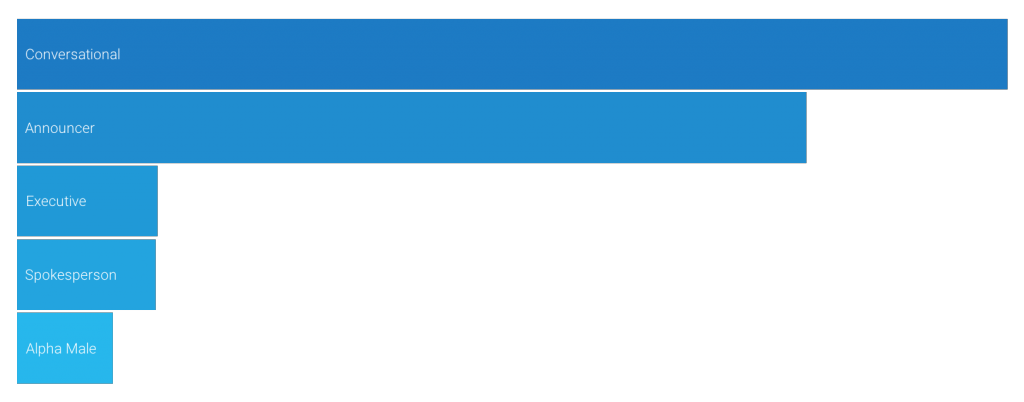
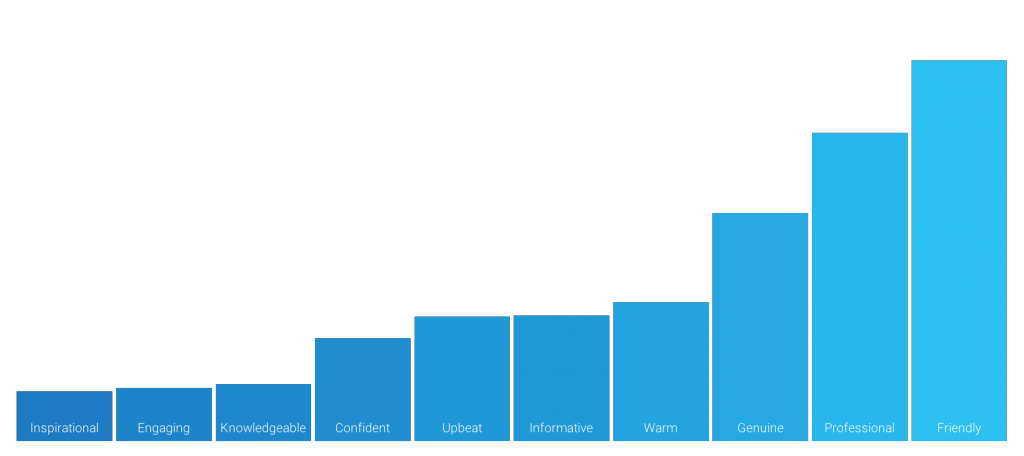
Comments
Wow this asks for more reads by me. Well done research and lots to learn thanks
Tons to digest here, a brilliantly thorough and well researched article. Good work! Joe